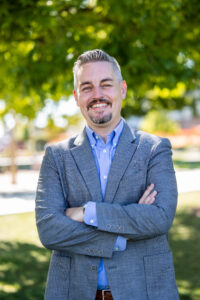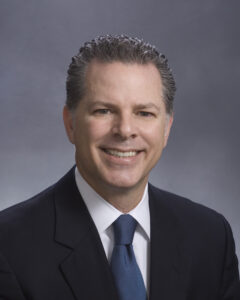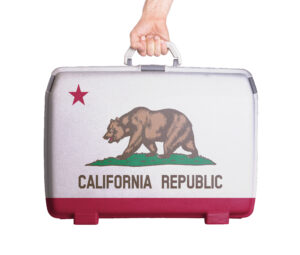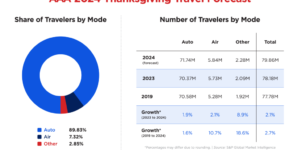It would be wrong to assume that California regulators and lawmakers are only now starting to ponder what to do about a potential insurance crisis in the wildfire-prone state.
Executive Summary
Does Proposition 103 need an overhaul? That’s a key question lawmakers have started asking as they examine the contributors to a growing insurance crisis in the California property market, eyeing factors beyond the increased frequency and severity of wildfires in the state.Here, Wells Media West Coast Editor Don Jergler reviews how we got to this point. After a little bit of history and a review of recent activities of carriers, regulators, agents and lawmakers, Jergler reveals that legislators, who have been listening to all sides of the crisis, may be the next to act with a Prop 103 fix.
This article is the cover story of Carrier Management’s third-quarter print magazine, publishing in late August. Consider becoming a Carrier Management member for regular magazine deliveries and access to exclusive content.
A state of urgency has been brewing for a few years—long before a string of large carriers said they are less interested in writing California property business. With it becoming increasingly evident that there would be a likely impact on more and more of the state’s insurance buying public, attention has turned to a possible change in the state’s guiding insurance laws, or at least how they are enforced.
State Farm General Insurance Co. announced at the end of May that it stopped accepting new policy applications for property/casualty insurance in California for reasons including increased risks from wildfires and inflation. The decision followed a similar move by Allstate Corp. last year. Farmers in early July announced it will limit new homeowners insurance policies in California.
Other large carriers that have reduced their appetite for writing California homeowners insurance include American International Group (AIG) and Chubb. Agents are reporting that businesses in higher-risk areas are paying increasing more for property insurance, which is becoming harder to obtain. Liberty Mutual said in late July it will stop offering its businessowners policy on Oct. 1.
To deal with rising rates and lack of availability, more homeowners have turned to the FAIR Plan, the state’s insurer of last resort for homeowners, or the surplus lines market. Reports from agents are that more property owners have been forced to take lower limits being offered by carriers, or some are going uninsured.
Fires and Climate
Despite a relatively average 2022 wildfire season, fears of wildfires remain at an “all-time high,” and those fears appear to be one driver of decision-making on property insurance, according to a Gallagher Re report showing the threat of damaging wildfires in conjunction with inflation and pricing challenges has led to a distressed insurance and reinsurance market, particularly in California.
The state’s wildfire season has become longer and more severe. Wildfire in recent years has been a large source of insured losses in California, surpassing previous records for size and total destruction.
Eight of the state’s top 20 wildfires have occurred in the last half-dozen years, burning 8,512 structures, according to the Western Fire Chiefs Association. The top three largest fires—the August Complex fire in 2020, the Dixie fire in 2021 and the Mendocino Complex fire in 2018—burned a collective 2.45 million acres and destroyed 2,526 structures.
Those losses do not reflect the destruction from the Camp Fire in 2018, because the 153,336-acre blaze doesn’t rank among the state’s largest. However, it was the state’s most destructive and its deadliest. That Butte County fire destroyed 18,804 structures, caused 85 deaths and is considered 2018’s costliest natural disaster at over $16.5 billion.
 “I have yet to run into somebody that they’ve been though a harder time with property insurance.”
“I have yet to run into somebody that they’ve been though a harder time with property insurance.”
Jeff Okrepkie, George Peterson Insurance Agency
Increased wildfire risk in California is often attributed to climate change. The phrase may continue to be political and debatable for some, but more studies have come out to support the assertion that climate change is worsening wildfire risks in the state. A study out in June shows that nearly all of the observed increase in summer wildfires in California over the past half-century was attributable to climate change. An international team of scientists looked at data from record-breaking summer forest fires in California that show a fivefold increase in summer burned area in forests in northern and central California during 1996 to 2021 relative to a period from 1971 to 1995.
Catastrophe modeler CoreLogic has for some time said worsening drought conditions related to climate change are exacerbating wildfire risk, and it noted that since the early 20th century, temperatures in the West have increased by 2 degrees Celsius.
Regulatory Reaction
California Insurance Commissioner Ricardo Lara has held public meetings to hear from impacted residents and stakeholders going back over five years, and he’s taken a number of immediate steps to help affected areas keep their insurance policies in force after massive fires have struck.
He also has increased fire coverages under the FAIR Plan for residential and commercial insureds.
On a number of occasions, Lara set moratoriums on cancellations following wildfires to protect homeowners, such as a mandatory one-year moratorium on insurance companies nonrenewing or cancelling residential property insurance policies in 2020, a move that aimed to help 2.1 million policyholders affected by the severe wildfire season. Earlier that year, he pledged to step up efforts to protect the state’s residents from wildfires and address a pullback of private insurers from the state’s riskiest areas.
Those efforts led to “Safer from Wildfires” regulations to mandate insurance discounts to homeowners and business owners who engage in wildfire safety and mitigation efforts. (Press release, “Commissioner Lara enforces nation’s first wildfire safety regulation to help drive down cost of insurance,” Oct. 17, 2022)
More recently, the department held a July 13 workshop as a continuation of the multiyear effort that Lara initiated in 2020. During the workshop, the department sought public input on technical and legal questions presented by the use of catastrophe models in ratemaking and the insurance rate approval process. With a regulatory framework and rewards for mitigation efforts made by property owners now in place, the workshop invitation called this “a next step in the thorough evaluation of tools that could help insurance policyholders and insurance companies better anticipate catastrophe losses.”
The commissioner and the California Department of Insurance also have worked to assure residents there is still capacity in the state. After Farmers said in early July that it will limit new homeowners insurance policies in California, a CDI spokesman reached out to for comment said Farmers is one of more than 100 companies continuing to write new homeowners business in California, and that “Californians are covered,” with “many choices including Farmers.”
According to the CDI’s market share data, this includes higher-risk areas. However, the goal of the department and Lara is to increase admitted lines insurance to those who have been forced into the pricier surplus lines market or the FAIR Plan, according to Michael Soller, a CDI deputy commissioner.
Soller sees their work as part of addressing a bigger problem in a world made riskier by climate change. “What California is experiencing is happening across the nation,” he said. “Regulators across the U.S. are dealing with the impacts of climate change.”
On the Front Lines: Agents React
It’s not just regulators, carriers and homeowners who are feeling things. Agents tasked with helping their clients find insurance coverage are feeling pinched between those clients facing paying higher rates or accepting lower limits and carriers who aren’t giving them much wiggle room.
 “Never before have we heard from consumers and insurance agents desperate for automobile and homeowners insurance but unable to obtain it because insurance companies are unwilling or unable to provide it.”
“Never before have we heard from consumers and insurance agents desperate for automobile and homeowners insurance but unable to obtain it because insurance companies are unwilling or unable to provide it.”
Michael D’Arelli, American Agents Alliance
“I’m hearing from agents every week, sometimes every day,” said Stephen L. Young, senior vice president and general counsel at the Independent Insurance Agents & Brokers of California.
Young and his IIABCal team have appeared to tell their tale in front of numerous Assembly and Senate Insurance Committee hearings in recent years, and they have been talking with regulators and insurers on behalf of their members, pushing for changes in regulations they believe will help address some problems now so noticeably arising.
One of those agents Young hears from often is Jeff Okrepkie, a producer at George Petersen Insurance Agency in Santa Rosa in Sonoma County. Okrepkie deals with mostly small to midsize businesses, many of which are facing rates and attitudes from carriers that are unprecedented in his 15 years in the business. The market conditions that have developed in the last two years have changed the way he does business each day.
“Commercial property is the worst it’s ever been,” he said. “I have yet to run into somebody that they’ve been though a harder time with property insurance.”
He started seeing the changes “a few years back with a batch of nonrenewals,” and the way he and others at his firm dealt with this was to take those policies in bulk to other carriers with hopes of a good fix. The willing carriers they found were offering lower limits and less coverage, forcing them to “mix and match” coverages from multiple carriers to get clients properly covered.
Just two years later, the “mix and match” solution is starting to look enviable.
“Now we’re getting nonrenewals from multiple carriers, and we’re having to find solutions for multiple clients,” he said, adding that some of his clients are taking lower limits being offered, “or they chose to go uninsured in [certain] locations because of the cost.”
Handling renewals used to take far less bandwidth, but now Okrepkie and his colleagues are spending far more time on renewals than working to bring in and service new business.
“We’re spending more time on renewals these days than we ever have,” he said.
Michael D’Arelli, executive director of the American Agents Alliance, a national association headquartered in Sacramento serving independent P/C insurance agents and brokers, penned an opinion piece for Insurance Journal in June calling for major regulatory reforms.
He called the regulation of P/C insurance in California “an epic failure” and urged the creation of “an expedited and fast-track rate approval process to accelerate the return to some semblance of a competitive insurance marketplace for consumers.”
Since 1962, the group has represented thousands of independent insurance agents in California.
“Never before have we heard from consumers and insurance agents desperate for automobile and homeowners insurance but unable to obtain it because insurance companies are unwilling or unable to provide it,” he wrote.
Is Prop 103 ‘a Jalopy’?
Several potential solutions have been proposed by agents and brokers associations like the American Agents Alliance and IIABCal, as well as the American Property Casualty Insurance Association. They all have at least one thing in common: reforming one of the state’s guiding insurance laws, Proposition 103.
Lawmakers, who must respond to growing fears from residents or fear losing their jobs, were on a break until mid-August, and as the new session in the state legislature starts stirring to life, it is still not clear what if anything will come from them. Until recently, reform of the decades-old law, and corresponding insurance regulations, was largely a partisan issue, with past insurance regulators and most Democrats in legislature unwilling to tweak or altogether undo the consumer protections the law affords.
 “If we don’t change conditions on the ground, we lose—and we lose big.”
“If we don’t change conditions on the ground, we lose—and we lose big.”
Frank Frievalt, California Polytechnic State University-San Luis Obispo
Over the past year, however, the law and how it is being enforced has been questioned by a growing number of lawmakers on both sides who are interested in finding solutions as carriers sour on the state.
This change in attitude became apparent in a Senate Insurance Committee hearing in May to address the lack of affordable insurance options for homeowners in wildfire-prone areas during which both Democrat and Republican committee members spoke with urgency about dealing with the growing problem.
One takeaway from that hearing was that both sides have numerous hard questions about Prop 103, which was passed by California voters in 1988. Prop 103 requires the California Department of Insurance to give prior approval before insurers can change P/C insurance rates, and it established factors that can be used in ratemaking. It also authorized an intervention process in setting insurance rates, enabling intervenors to recover fees and expenses under certain circumstances.
A nearly 10-year-old report from the Consumer Federation of America showed Prop 103 saved California drivers more than $100 billion by 25 years after its passage, with drivers spending 0.3 percent less on auto insurance in 2010 than in 1989.
Its detractors say the intervenor process can slow down rate requests, delaying necessary rate hikes that carriers need to reflect current risks and incoming claims, and that it enriches intervenors—namely the group Consumer Watchdog and its founder, Harvey Rosenfield, who authored Prop 103. Consumer Watchdog is often an intervenor in hearings in which that process gets triggered.
In the May committee meeting, legislators hit Rosenfield with critical questions. Over the years, that’s not unprecedented. But those questions usually come from the insurance industry and Republican lawmakers.
Committee Chair Susan Rubio, D-Baldwin Park, pointed out during the hearing that rate increase requests involving intervenors can sometimes take two years.
Rubio and all committee members who commented at the hearing were reached out to for current comments for this article. None were immediately available for comment during the legislative break.
During the hearing, state Sen. Bill Dodd, D-Napa, expressed concern that rates carriers are currently getting may not be enough to reflect the increased risks.
State Sen. Roger Niello, R-Fair Oaks, didn’t hold back on his feelings about Prop 103. He questioned the value of adhering to an aging law, calling the decades around the time Prop 103 passed and was implemented a “very, very different time.”
“It could be that Prop 103 is well-tailored to what existed in the early 80s and mid-90s but perhaps not quite so well-suited to today,” Niello said.
Niello latched onto a used car analogy tossed out earlier in the meeting to describe the law today: “It may now be an absolute jalopy.”
State Sen. Marie Alvarado-Gil, D-Jackson, questioned the intervenor process, asking why California is the only state that allows outside agencies to intervene in P/C ratemaking. “Why would the insurance industry in California want to do business in the state if we are the only state that makes it this difficult for them to do their business?” she said.
 Rosenfield, on hand at the committee hearing to defend and explain the value of Prop 103, said those calling out Prop 103 as a financial obstacle, including some of the insurers reducing business in the state, aren’t actually in any financial distress. In fact, they are prospering, according to Rosenfield.
Rosenfield, on hand at the committee hearing to defend and explain the value of Prop 103, said those calling out Prop 103 as a financial obstacle, including some of the insurers reducing business in the state, aren’t actually in any financial distress. In fact, they are prospering, according to Rosenfield.
He pointed to $12.1 billion in subrogation paid out for wildfire losses in lawsuits to insurers by utility companies in the last few years. The California Department of Insurance couldn’t confirm his figure, but it may not be far off. Pacific Gas & Electric (PG&E) announced it had reached an $11 billion settlement with insurers for claims stemming from the 2017 wildfires in northern California and the 2018 Camp Fire. Other utilities also have announced large settlements with insurers over California wildfires.
Beyond those payments, California homeowners insurance carriers took in $64.9 billion in premiums more than they paid out in claims from 1991 to 2021, according to Rosenfield, who got his figures from the National Association of Insurance Commissioners Report on Profitability by Line by State in 2021.
Asked about Rosenfield’s figures on this point, a CDI spokesman said that under California’s rate formula, insurers are allowed to include an allowance for profit and expenses (known as an efficiency standard). Profit and expenses differ depending on the line of insurance and type of writer, and Rosenfield’s numbers do not account for those costs, according to the spokesman.
Rosenfield also said California homeowners insurers saw a return of 8.8 percent compared with a 6.2 percent national average, citing the same 2021 NAIC report. “They’re not in financial trouble,” he told Senate insurance committee members.
His defense of the intervenor process was that it saves consumers money and that it doesn’t extensively delay the approval process. In fact, he added, homeowners insurers in California are getting 94 percent of their rate request approvals, with an average approval of 10.2 percent. That figure comes from an analysis of data compiled by CDI and published on its website. (Editor’s Note: On earnings conference calls, carrier executives often note that their companies typically file for 6.9 percent rate increases in California, even though they actually need higher jumps. The 6.9 percent requests escape the lengthy intervenor process, which kicks in for reviews of rate filings with indications higher than that threshold. Agents testifying at the Senate hearing offered that same explanation when a senator suggested that Rosenfield’s rate approval figures fly in the face of their complaints that carriers can’t make money in the state.)
Rosenfield’s defense of Prop 103 also centered around the insurance crisis in California in the 1980s when the law was passed, noting a lack of transparency and regulation that existed at the time of a crisis of similar availability and affordability to the one that exists today. In the over 30 years since the law passed, he noted, California has seen the lowest growth in auto insurance premiums nationwide (and $154 billion in savings for motorists alone). That figure comes from a 2019 Consumer Federation of America report in which the national consumer advocacy group compared price changes between 1989 and 2015 to national average auto insurance price changes.
Waiting for Rate Approvals
According to CDI records, intervenor involvement provided in Prop 103 can make rate hearings longer. In homeowners insurance rate hearings from 2015 to 2022, the department’s review time has averaged six months. The CDI data shows the average approval timedoubled from 160 days to 337 days. However, since the beginning of 2017, only 4 percent of all approved filings have been intervened.
Many people are skeptical of change ever being made to Prop 103. Insurers for decades have attacked the law unsuccessfully through propositions and efforts to convince lawmakers to amend it.
Assembly Member Bill Essayli, R-Riverside, oversees a district in Southern California that encompasses a wide swath of wildland area. Essayli, who is vice chair of the Assembly Insurance Committee, views the intervenor process as Prop 103’s top drawback.
“The law firm that wrote it gave them a lot of authority and power to be a check on the insurance commissioner,” Essayli said. He was referring to Consumer Watchdog and Rosenfield, an attorney, adding that he views Prop 103 as “permanent job security for one particular law firm.”
“That’s the biggest problem with the proposition, I think, that needs to be taken away,” he said.
What will that take? A lot, in the view of Essayli.

“It’s going to take a ballot initiative,” he said, adding that the majority Democratic party has shown little interest in serious changes to Prop 103. “Until a legislator puts a bill forward to introduce that as a ballot initiative, it’s not a serious proposal.”
Ballot initiatives have been tried more than once, and it’s expensive to get out the message to voters why a law intended to benefit consumers should be changed, he said.
Young, with IIABCal, has been skeptical in the past of changing Prop 103, too. Now, he said, “There are signs that that’s starting to change.” Up until the last month or so, issues of high property insurance rates and lack of availability have been felt largely in rural areas, not inner cities where Democratic leaders are often located. As wildfires grow and insurers reduce writing business, the problem looks to spread to increasingly more districts.
Still, Young sees a way to solve some of the state’s insurance problems without lawmakers or initiatives. He believes the insurance commissioner has the power to make changes now (described below) and can embrace plans being touted by his group and others that can coexist with Prop 103 if necessary.
That would seem like an easy route, but any step that would seem to favor businesses over consumers is a potential political hot potato.
“He just hasn’t had the political courage to actually implement the changes that are required,” Young said of Lara.
Changes Required
One response to keeping insurance business in the state has been to call for the use of catastrophe modeling that takes ongoing and future changes to wildfire risk into account, rather than relying on decades of historical loss experience. The inclusion of reinsurance costs in rate indications is another idea being pushed by agents in California.
The IIABCAL’s Plan to Restore the California Property Insurance Market proposal calls for the insurance commissioner to issue emergency regulations to permit admitted insurance companies to use catastrophe models “to project expected loss and defense and cost containment expense for wildfire risks in residential property insurance and commercial property insurance covering property located in this state.” The proposal would require any admitted insurer using the models to provide information on any model used to the commissioner.
The agents’ proposal calls for regulations to permit admitted insurers to include the net cost of reinsurance specific to wildfire risks in rates for residential and commercial property insurance in the state. It mandates that prior approval filings disclose whether catastrophe models “were used to calculate the net cost of reinsurance, including to calculate the expected ceded losses and defense and cost containment expenses to reinsurers.”
Rosenfield during the Senate Insurance Committee meeting said he believes that allowing the reinsurance costs to factor into rates would push them up by “40 to 50 percent immediately.”
He also called out the models proposed as using “blackbox algorithms” because the algorithms are typically deemed proprietary. In an interview for this article, Rosenfield noted that Prop 103 requires rating information to be made public, and that while plans being put forward by the industry outline steps to make some of that information public, that information does not include the algorithms used in modeling.
“The insurance companies don’t want to make it public,” he said.
If they have to disclose everything in the models? “It would work,” he said.
Lara and the CDI may be more open to letting modeling be used in ratemaking than past commissioners and their staffs. One indication is the fact that CDI scheduled the July 13 workshop focused on exploring insurers’ use of risk assessment tools. The stated goal of the workshop was to “protect consumers and address climate-intensified wildfire risks in California.”
Rosenfield believes the commissioner will likely go along with enabling modeling to be used.
“I think he is. We’ll soon find out,” Rosenfield said. “I think he’s under enormous pressure.”
Soller said there will be a follow-up workshop to hear about modeling and other solutions later in the year.
Asked which way the commissioner is leaning—allow modeling ratemaking or not—he at least indicated no doors have been shut on that.
“We’re continuing to evaluate risk assessment tools being used by insurance companies, and that includes catastrophe modeling,” Soller said.
Asked about whether reinsurance costs could be used, Soller sounded less “door open” than in his answer to the modeling question.
“The reason the department hasn’t allowed it is we do not regulate reinsurance costs, which are affected by global catastrophes,” he said. He declined to say more.
An Underutilized Tool: Mitigation
Frank Frievalt, who recently retired as fire chief of Mammoth Lakes, sees other solutions to a growing insurance problem. Frievalt, who now serves as director of Wildland-Urban Interface Fire Institute College of Agriculture, Food, and Environmental Science at California Polytechnic State University-San Luis Obispo, started to notice changes in fire behavior and the size of damages from raging wildfires in 2016. He believes mitigation is an underrated and underutilized tool.
Mitigation at the parcel-level and community-wide mitigation can reduce the damage from wildfires and ultimately keep carriers from fleeing a riskier state, he said.
Frievalt’s solution, which mirrors the increased home hardening and mitigation that fire experts across the state have been calling to be made for years, has three elements:
- Follow evidence-based mitigation efforts that are effective. Adjustments from the top down won’t help if effective mitigations aren’t made on the ground. “This is something we can’t suppress our way out of, and we can’t market-price our way out of—only mitigate our way out of,” he said.
- Deal with fire pathways at three levels: vegetation to vegetation; vegetation to structure; structure to structure.
- Make these mitigations highly visible to actuaries in reinsurance and insurance markets to build trust in those mitigation efforts. “If we don’t change conditions on the ground, we lose— and we lose big,” Frievalt said.





















 So…Where Are We Now? VC Viewpoint on InsurTech Funding Trends
So…Where Are We Now? VC Viewpoint on InsurTech Funding Trends  Cyber Threats, Climate and Business Interruption Risks Top Insurance Buyers/Sellers Concerns
Cyber Threats, Climate and Business Interruption Risks Top Insurance Buyers/Sellers Concerns  The Evolving GenAI Journey: Three Ways the Technology Is Impacting P/C Insurance
The Evolving GenAI Journey: Three Ways the Technology Is Impacting P/C Insurance  Hurricane Wind Speeds Increased by 18MPH Over Past Five Years: Study
Hurricane Wind Speeds Increased by 18MPH Over Past Five Years: Study 
















